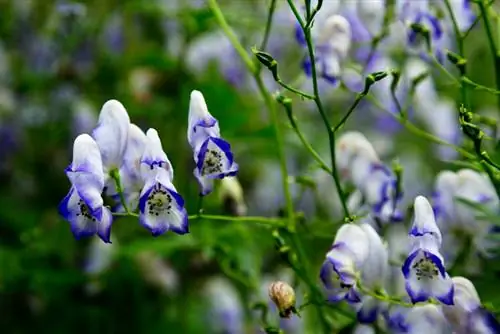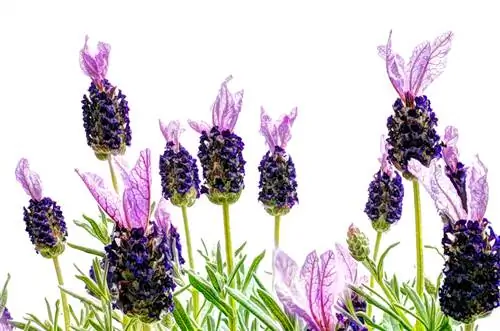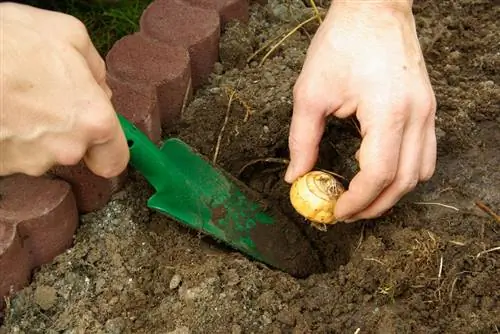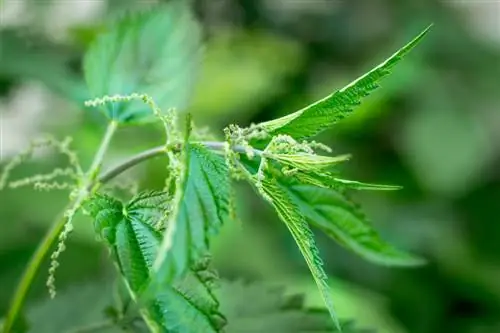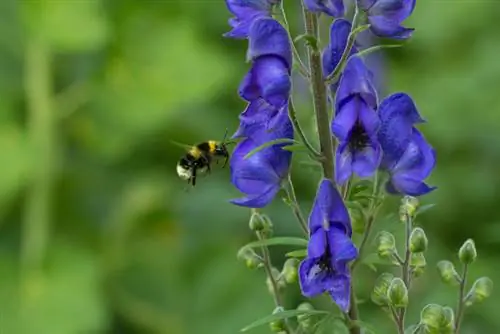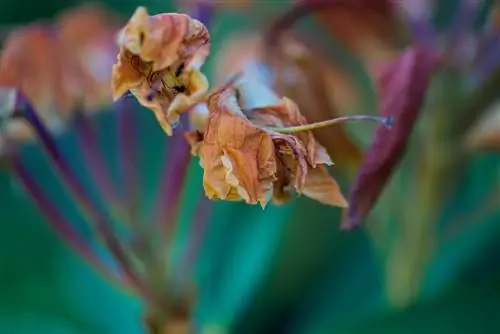- Author admin [email protected].
- Public 2023-12-16 16:46.
- Last modified 2025-01-23 11:20.
Although monkshood has a high concentration of poison in all of its plant parts and also the seeds, it has long been an extremely popular garden plant. This is not only due to the striking blue color of many monkshood species, but also to the comparatively long flowering period.
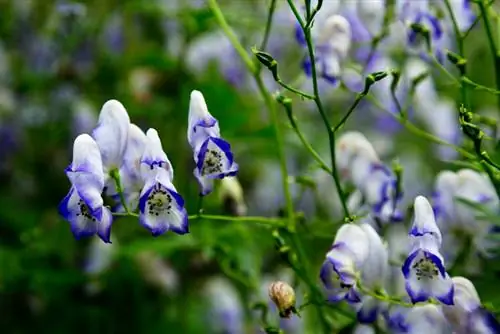
When is the monkshood flowering time?
The flowering time of monkshood varies depending on the variety, with blue monkshood (Aconitum napellus), for example, blooming from July to September. Other varieties such as yellow monkshood bloom in early summer, while autumn monkshood blooms late in the year.
A perennial bloomer for the garden
The individual flowers on the monkshood inflorescences are shaped approximately like a knight's helmet, hence the name of the plant. The flowering period is extended because not all of the individual flowers on a stem bloom at the same time. Overall, for example, the blue monkshood (Aconitum napellus) blooms from about July to September. The exact period also depends on factors such as altitude.
Different varieties bloom at different times
To date, around 300 subspecies of monkshood have emerged through natural selection and breeding. Many of them bloom in particularly striking colors, such as:
- Blue monkshood (Aconitum napellus)
- Yellow monkshood (Aconitum lamarckii)
- Autumn monkshood (Aconitum carmichaelii Arendsii)
- Trailing monkshood (Aconitum hemsleyanum Red Wine)
While the yellow monkshood blooms from early summer, the appropriately named autumn monkshood brings color to the perennial bed late in the year. By cleverly combining different varieties, you can harvest monkshood flowers as attractive cut flowers throughout the entire gardening season.
Tip
If you want to use monkshood inflorescences as cut flowers, you should cut off flowers as soon as around 30% of the individual flowers have opened. When placing it in a vase, please note that just touching this highly poisonous plant can cause numbness and other discomfort.

